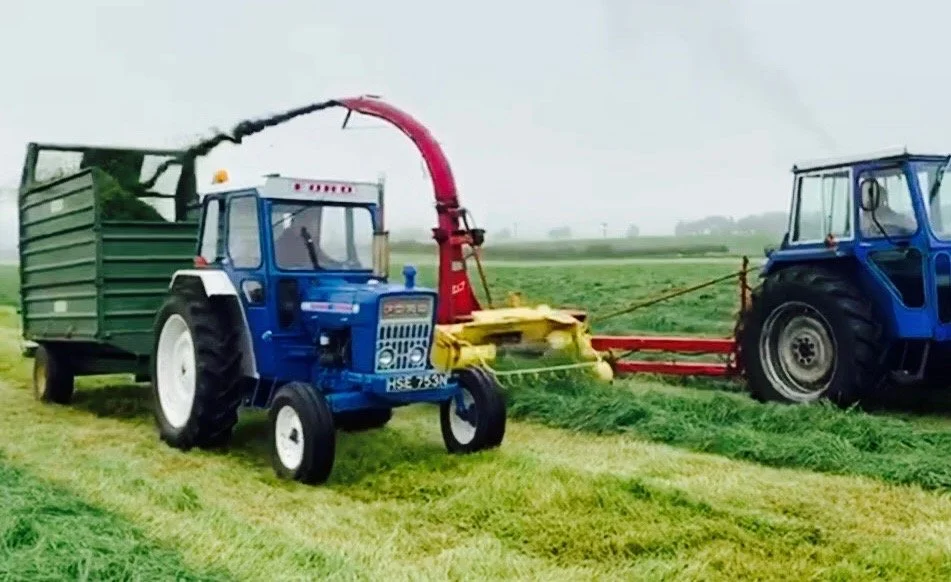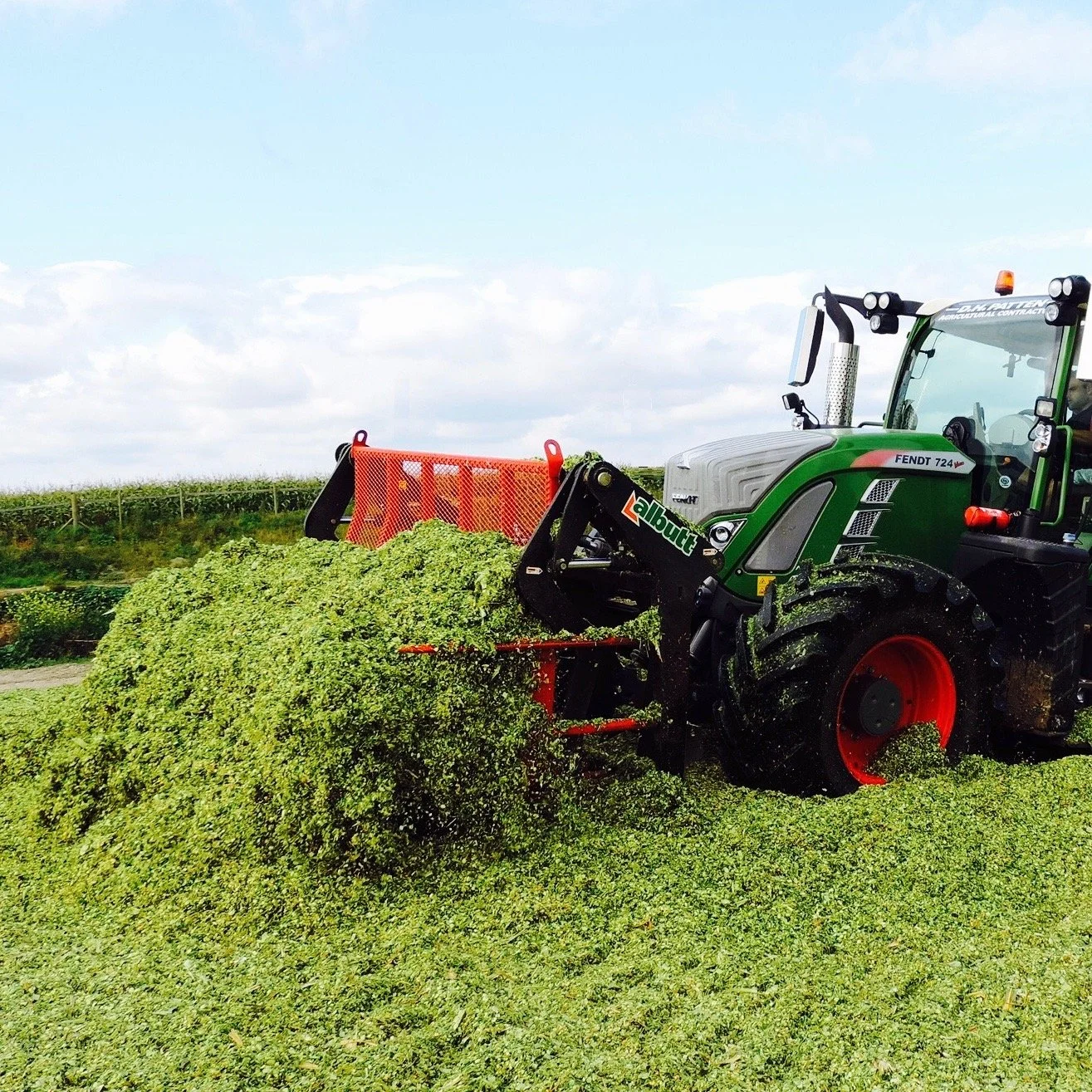Can you make silage TOO fast?
Once silage fever bites, country folk of a certain persuasion take on a different persona. Trailer drivers take to the road like Lewis Hamilton attacking a qualifying lap. There is so much rubber laid down from locked up brakes that the entrance to the field and the approach to junctions look more like the start line at Santa Pod than a country lane. No one dares to leave the cab so bladders like a camel are required by all to make sure no precious seconds are lost. But is all this haste really necessary to make good silage or would a bit less speed make better silage?
JCB 419S on the clamp
These thoughts came to mind whilst speaking with a more senior farmer who no longer has the task of making silage. “We used to make some good stuff in our day, do they really need to be racing about like they do?” This comment together with another asking me if silage quality is really any better now than it was 20 years ago got me thinking that this is a subject that needs some investigation.
Is silage quality increasing over time?
Progress is measured in many different ways but in general terms, agriculture has been considered to be doing a better job over time. Yields for cereals, daily live weight gains, milk yields, lambing percentages – almost whatever you measure has, over time, seen a general “improvement” in performance and efficiency. Is the same true of silage? Well you will have your own records to prove one way or another but in general, nationally and globally, it’s a fair statement to say silage quality has improved over time.
Obviously there are seasonal variations and special circumstances that will always throw in a rogue result, but silage quality has continued an upward trend. So what has been behind this, and is there a limit to how good things can get?
What has changed to make silage better today?
The improvements from better plant breeding can’t be dismissed. Today’s forage crops are a better starting point than those in 70’s and 80’s so they should make better silage. But the increase in costs of re-seeding have seen many more of today’s livestock farmers utilizing older swards and leys to make silage. The move to 365 housing for dairy cows have also resulted in lots of permanent pasture that would have been summer grazed, now being used to produce silage.
So these improvements in silage quality can’t all be down to better seed. Obviously maize silage is produced from a fresh crop every year but in grassland we need to look for something else. Silage inoculants do have a hand in the improvements and the results can often be clearly demonstrated between the before additive and after additive analysis results. But those farmer who don’t use inoculants and additives are also producing better silage, so what’s the secret?
The secret is speed – the speed we make silage today is completely off the scale compared to early clamp silage production. Back in the day the advisors of the time would recommend you gear up to make your silage within a two-week time frame. That’s not to say you should make your silage at some point within a two-week window – it was to try and cut, wilt, chop and clamp the silage within 14 working days. Today we try and achieve that in 24 hours! That has been the big change and where the most improvement has come from.
Can you clamp the silage too fast?
So are we going too fast and should we slow down a bit? Well in terms of safety then probably yes we do get a bit over excited. The actual amount of time we save over a day by treating every load or run like a lap of the Isle of Man TT course is negligible. We could probably gain time by going a bit slower but that’s the topic for another in this series.
Where we can go too fast is at the clamp. The speed that the crop hits the clamp can be detrimental to the silage quality because the guy(s) tasked with clamping the material needs to do the job properly. We need to spread the material in 150mm (6”) layers and properly compact it between layers. If there isn’t time to do that then the silage quality will be compromised.
Are big forage harvesters making bad silage?
So smaller choppers then….. eeerrr no, not at all. If the clamp is under pressure, then solution should be a more balanced team or fleet. Bigger buckrake / loading shovel / compactor should be the solution to this issue. Slowing down the rate we can pick the crop up will result in more field losses so a re-balance should concentrate on increasing the clamping capacity. Wider buckrakes can make a big benefit. If you need 4 passes to clear a load with a 10’ (3m) buckrake or fork, then a 14’ (4m) will do the same job in 3 passes. That’s a 25% reduction in work load – or 33% increase in capacity depending on which way you want to measure it.
Albutt push-off fork
Adding in a compactor tractor will probably halve the workload of the buckrake machine. So we can maintain the pickup rate and still ensure great silage quality with good clamping practice.
So where is the limit to silage making speed?
Just as we are unlikely to ever see a sub 5 second 100m sprint race, we can’t expect to increase silage making speed forever. The physical constraints for the clamp are likely to be the limiting factor as there is just not enough room for bigger plant to operate. Weight limits on the structure are also something we need to take very seriously. But more speed has generally been a good thing for silage quality. We just need to make sure the silage team is balanced in terms of output and capacity and that the drivers remember the old adage of “more haste – less speed”.
If you want to discuss how to make better silage or want to discuss any of the other aspects of silage making covered in this series – contact Jeremy Nash at Jeremy@silageconsultant.co.uk
Follow us on social media:



